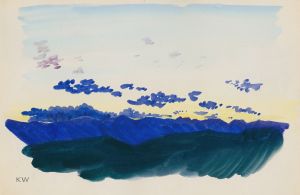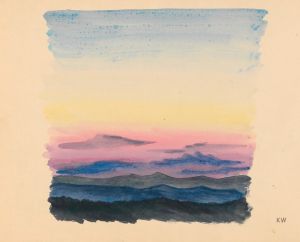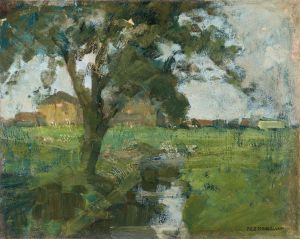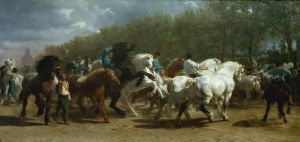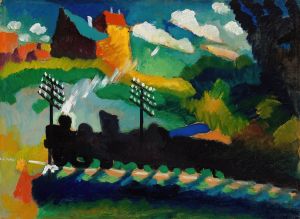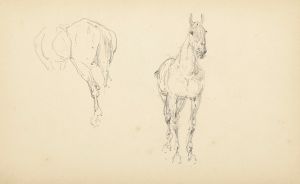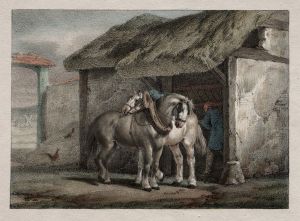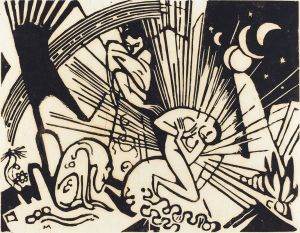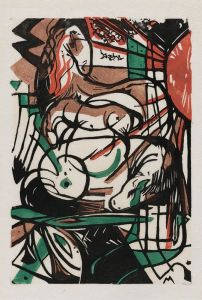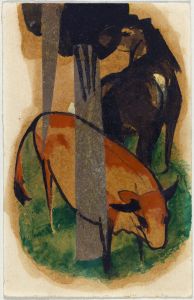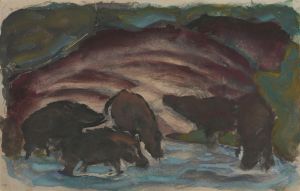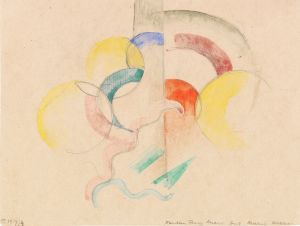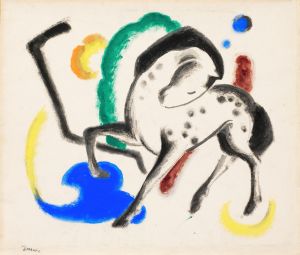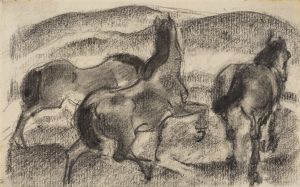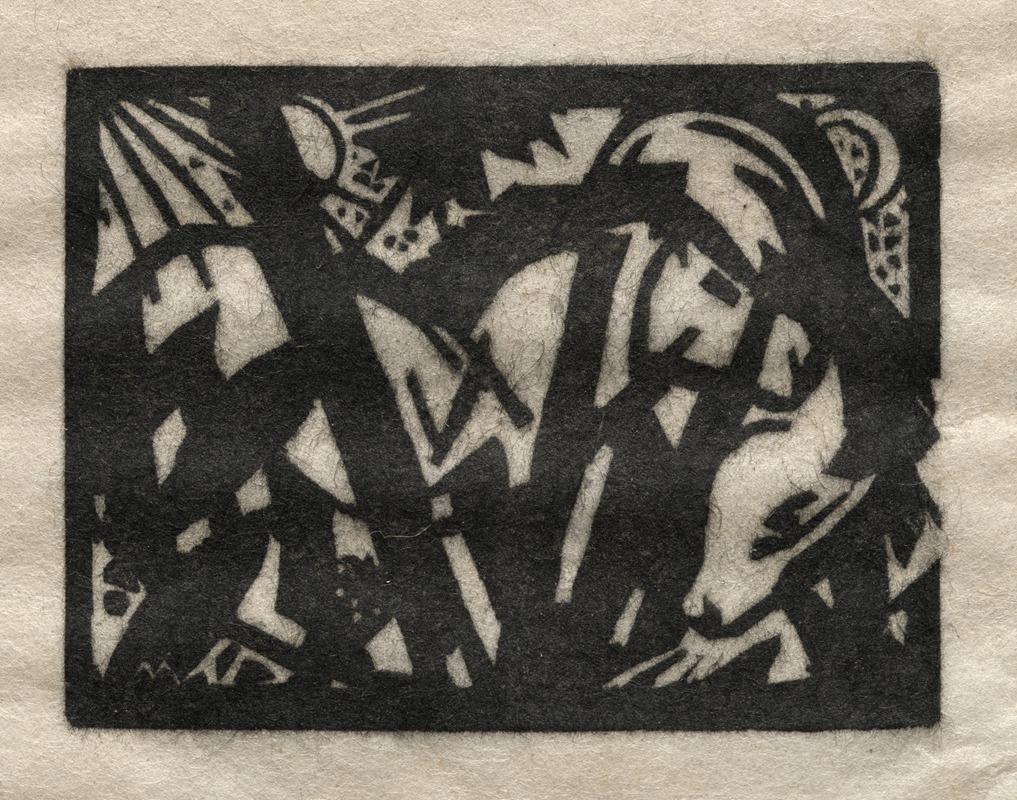
Horse
A hand-painted replica of Franz Marc’s masterpiece Horse, meticulously crafted by professional artists to capture the true essence of the original. Each piece is created with museum-quality canvas and rare mineral pigments, carefully painted by experienced artists with delicate brushstrokes and rich, layered colors to perfectly recreate the texture of the original artwork. Unlike machine-printed reproductions, this hand-painted version brings the painting to life, infused with the artist’s emotions and skill in every stroke. Whether for personal collection or home decoration, it instantly elevates the artistic atmosphere of any space.
Franz Marc was a German painter and printmaker, and one of the key figures of the German Expressionist movement. He was born on February 8, 1880, in Munich, Germany, and died on March 4, 1916, during World War I. Marc is best known for his depictions of animals, which he believed were more pure and beautiful than humans. His work often features bold colors and abstract forms, reflecting his interest in the spiritual and emotional aspects of art.
One of Marc's notable works is "Horse," which is part of his extensive series of animal paintings. Franz Marc had a deep fascination with horses, which he often depicted in his art. He saw animals as symbols of purity and innocence, and his paintings of horses reflect this belief. Marc's horses are typically rendered in vibrant colors and dynamic compositions, capturing the essence and spirit of the animal.
Marc's use of color was heavily influenced by his association with the Blue Rider (Der Blaue Reiter) group, which he co-founded with Wassily Kandinsky in 1911. The Blue Rider group was an informal association of artists who shared an interest in abstract art and the spiritual in art. They believed that color could convey emotional and spiritual truths, and this belief is evident in Marc's work.
In his paintings of horses, Marc often used a palette of blue, red, and yellow, which he believed had specific symbolic meanings. Blue represented spirituality and masculinity, yellow symbolized femininity and joy, and red conveyed violence and the earth. By using these colors, Marc aimed to express the inner essence of the horse rather than its external appearance.
One of the most famous of Marc's horse paintings is "The Large Blue Horses" (1911), which depicts three blue horses standing in a landscape of rolling hills. The horses are rendered in a stylized, almost abstract manner, with their bodies forming a harmonious, flowing composition. The use of blue emphasizes the spiritual and serene nature of the horses, while the background colors create a sense of movement and energy.
Marc's horse paintings are characterized by their dynamic compositions and bold use of color. He often depicted horses in motion, capturing their grace and power. His work reflects his belief that animals were closer to nature and the divine than humans, and his paintings convey a sense of reverence and admiration for these creatures.
Franz Marc's career was tragically cut short by his death in World War I, but his work has had a lasting impact on the art world. His innovative use of color and form, as well as his spiritual approach to art, have influenced generations of artists. Today, Marc's paintings are held in major museums around the world, and his depictions of horses remain some of his most beloved and iconic works.
In summary, Franz Marc's "Horse" paintings are a testament to his unique vision and his deep connection to the natural world. Through his use of bold colors and dynamic compositions, Marc captured the essence of the horse and conveyed his belief in the spiritual purity of animals. His work continues to inspire and resonate with audiences today.





